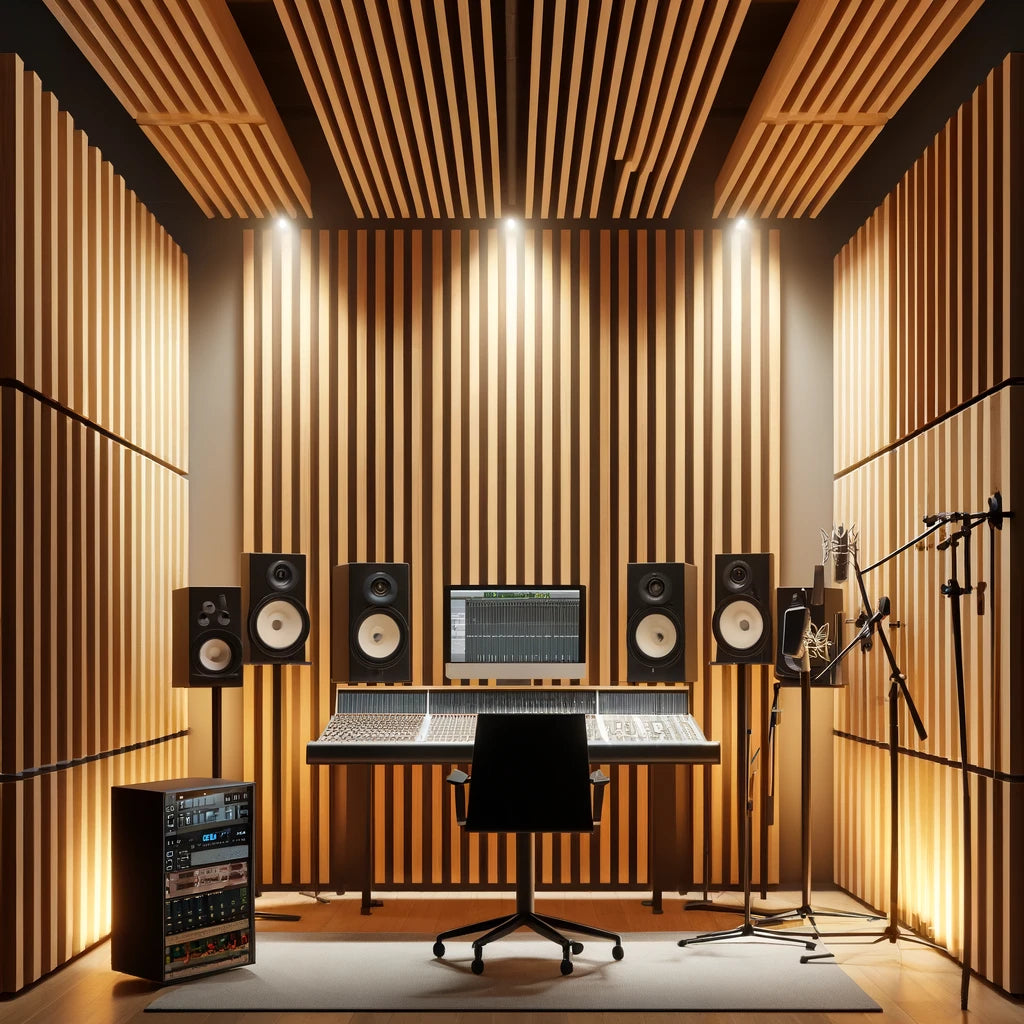A Symphony of Style: Acoustic Wall Panelling in Music Studios
Transforming your music studio into a sound haven requires more than just high-quality equipment. The right wall panelling can significantly enhance both the aesthetics and acoustics of your space. In this blog post, we'll guide you through the benefits of acoustic wall panels, provide step-by-step instructions for installation, and offer expert tips for achieving the perfect setup. Whether you're a professional musician or a home studio enthusiast, these insights will help you create a studio that looks and sounds exceptional.
Why Choose Acoustic Wall Panelling?
Acoustic wall panels offer several advantages that make them an essential element in any music studio:
Aesthetic Appeal
Acoustic wall panels come in a variety of designs, colors, and textures, allowing you to customize your studio's look while maintaining a professional appearance.
Sound Quality
These panels absorb sound, reducing echo and improving the overall acoustics of the room. This is crucial for recording and mixing, ensuring that you hear the true sound of your music.
Durability
High-quality acoustic panels are built to last, with materials that withstand the wear and tear of a busy studio environment.
Easy Installation
Many acoustic wall panels are designed for easy installation, making them a practical choice for both professional studios and DIY projects.
Tools and Materials You'll Need
Before you begin, gather the following tools and materials for your acoustic wall panelling project:
- Acoustic wall panels
- Measuring tape
- Level
- Pencil
- Adhesive or mounting hardware (nails, screws, brackets)
- Saw (if panels need cutting)
- Sandpaper
- Caulking gun
- Caulk
- Paint (if needed)
- Safety gear (gloves, goggles)
Step-by-Step Guide to Installing Acoustic Wall Panelling
Step 1: Prepare Your Walls
Cleaning and Smoothing the Surface
Start by preparing your walls. Clean the surface thoroughly to remove any dust, dirt, or grease. Use sandpaper to smooth out any rough areas or imperfections. This ensures that the panels adhere properly and the installation looks seamless.
Measuring and Marking
Measure the dimensions of your wall and mark where each panel will go. Use a level to ensure your lines are straight. This step is crucial for achieving a professional finish and ensuring that the panels fit perfectly.
Step 2: Cutting the Panels
Measuring and Marking the Panels
Measure your acoustic wall panels to fit the dimensions you marked on the wall. Mark the panels with a pencil where they need to be cut.
Cutting the Panels
Using a saw, carefully cut the panels to the required size. Ensure you wear safety gear during this step to protect yourself from dust and debris.
Step 3: Applying Adhesive or Mounting Hardware
Choosing the Right Adhesive or Hardware
Select an adhesive or mounting hardware suitable for the type of wall panels you are using. Some panels may require specific adhesives, while others might be designed for hardware mounting. Check the manufacturer's recommendations for the best results.
Applying the Adhesive or Installing Hardware
If using adhesive, apply it to the back of the wall panel in a zigzag pattern. Be generous but avoid applying too much adhesive, which can cause the panels to slip or not adhere properly. If using hardware, follow the manufacturer's instructions for securing the panels to the wall.
Step 4: Installing the Panels
Placing the Panels on the Wall
Carefully press the panel onto the wall, starting from the bottom and working your way up. Use a level to ensure the panel is straight. Press firmly to ensure good adhesion. If using hardware, secure the panels according to the instructions.
Securing the Panels
Depending on the type of wall panels and the adhesive or hardware used, you may need to secure the panels temporarily until the adhesive sets. Follow the manufacturer's instructions for the best results.
Step 5: Finishing Touches
Filling Gaps and Seams
Once all the panels are installed, check for any gaps or seams between them. Use caulk to fill these areas for a seamless look. Smooth the caulk with your finger or a caulking tool.
Painting (If Needed)
If your acoustic wall panels are paintable, consider adding a coat of paint to enhance their appearance. Choose a paint color that complements your studio’s decor.
Final Inspection
After the panels are installed and any paint or caulk has dried, inspect your work. Ensure all panels are securely attached and that there are no visible gaps or imperfections.
Tips for a Professional Finish
Take Your Time
Rushing through the installation can lead to mistakes. Take your time to measure, cut, and apply each panel carefully.
Use Quality Materials
Investing in high-quality wall panels and adhesive will result in a more durable and attractive finish.
Seek Help If Needed
If you’re unsure about any part of the process, don’t hesitate to seek help from a professional or consult online resources.
Explore Our Collection of Wall Panels
Ready to transform your music studio with stunning acoustic wall panelling? Visit our website to explore our extensive collection of wall panels. Find the perfect style and design to match your studio’s decor and start your acoustic wall panelling project today!

